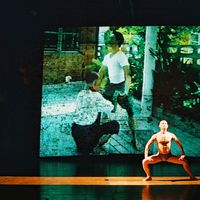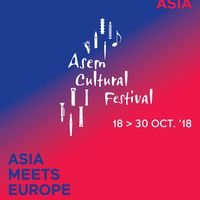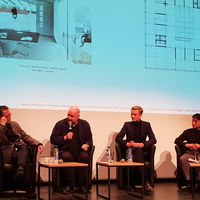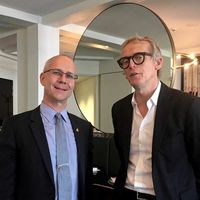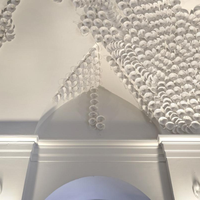Singing Masks | An interview with Honore d'O
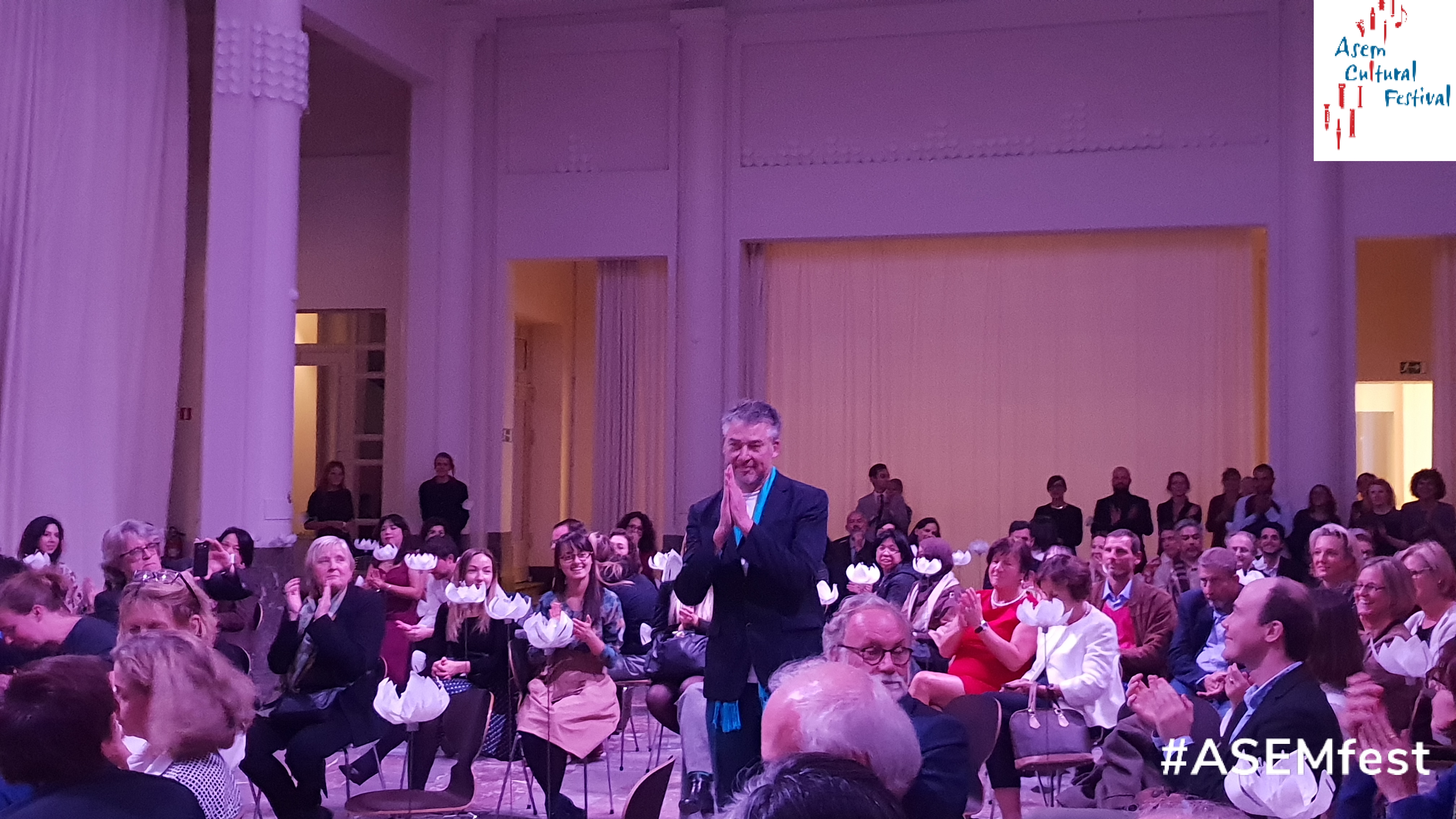
Visual artist Honore d’O opened the ASEM Cultural Festival on 18 October 2018 at the Centre for Fine Arts-Brussels (BOZAR) with ‘Singing Masks’, a digital and musical installation specially created for the Festival. Using the masks as a leitmotif, he highlighted real and imaginary boundaries between Europe and Asia. The installation is on exhibition until 12 December 2018. Honore d’O shares his experience in creating this spellbinding inter-disciplinary work with culture360.
Visual art is placed in the space of perception. As a painter, one day, I stopped being satisfied with the final result on the wall. If art can be out of us, I wanted to know when and how art can be within us.
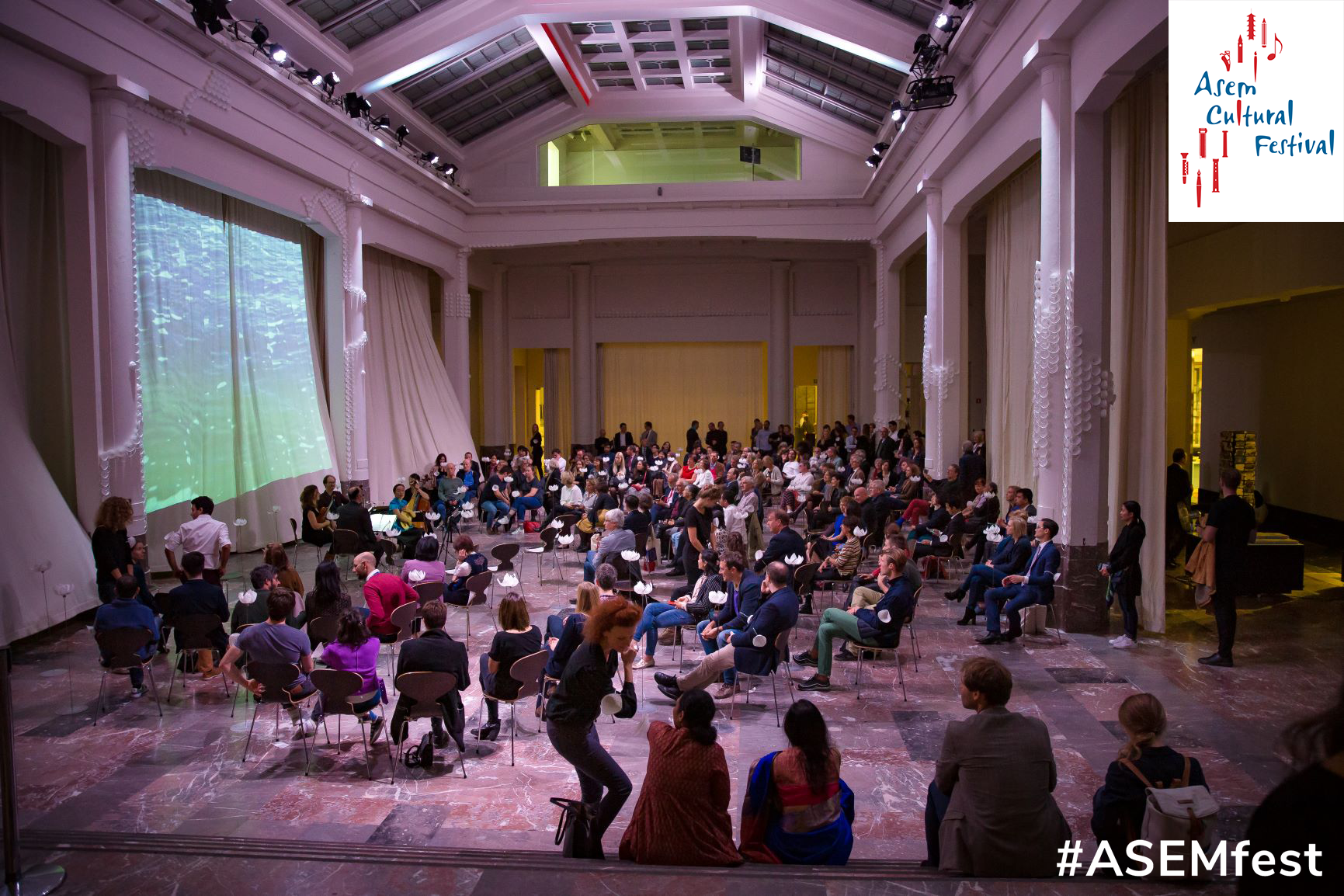
This digital creation merged with music presents an experiential work for the audience attending the opening event of the ASEM cultural festival. What was your experience of bringing two artistic disciplines: digital art and music together, to create this fascinating digital-musical installation?
In the well-balanced composition, I care for an even-minded participation of the parts. Every section keeps its autonomy. I nurse the fractions with the frictions. As a boy, my parents sent me to the ‘music academy’ as well to the ‘drawing academy’. I had not a single talent for music, only an understanding of the verity and beauty of the medium. That’s why here the participating musicians are chosen for their extreme eminence. The digital is an ultimate dissection; we can’t grip it, similar to music. Avoiding the trap of technology, I focus on the clash between the 1 and the 0, which need to live together, to export us a certain meaning. I bring sound and silence, noise and composed music. All their digits have an ephemeral nature, I lay them in the air. The air becomes the canvas.
In your work, you always emphasise the surroundings where the work is placed. For example, in ‘Singing Masks’, the architecture of Horta Hall at BOZAR has influenced the final design of this work. How do you decide to integrate your knowledge of architecture into your digital creations?
Visual art is placed in the space of perception. As a painter, one day, I stopped being satisfied with the final result on the wall. If the art can be out of us, I wanted to know when and how the art can be within us. My curiosity wanted to figure out how the artistic information in the artwork comes free from the objective piece of art towards the reader. This phenomenon of travelling information is being enacted in the living field, where the architectural environment holds together the book and the reader, the visitor and the artwork.
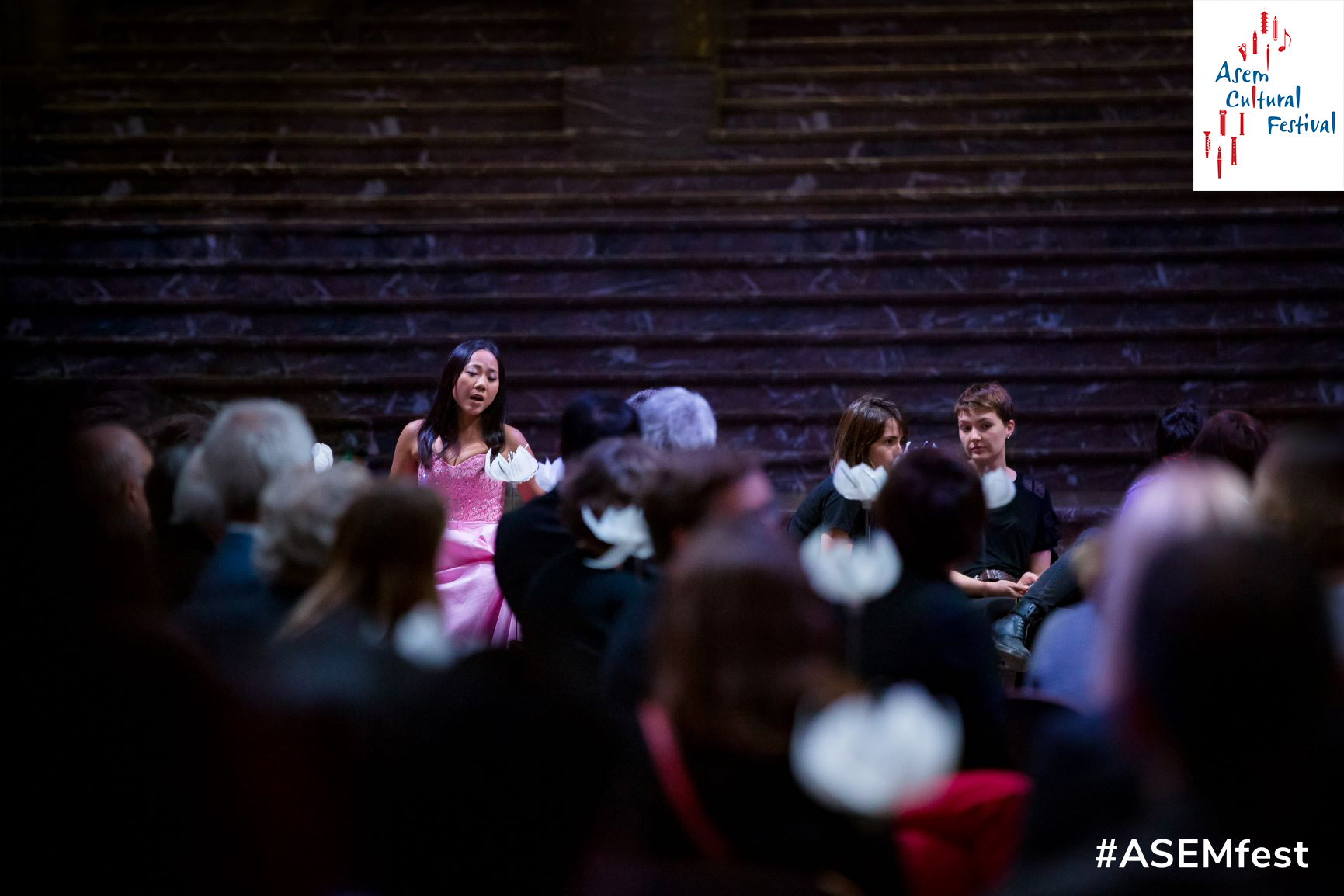
Through your vocabulary, you are challenging conventional definitions about the boundaries between the East & the West. Are the two regions really different? Or do they share similar concerns but different responses?
After many travels to and exhibitions in what we call the east, I understood that the differences between Asia and Europe are less outspoken as one may think. Different societal and cultural codes are built on similar concerns for our habitat and for life in general. The Singing Masks installation is breaking the legitimate and imaginary borders between the East and West; it offers us solutions from both sides. We need reciprocal references to define our position and relationship towards the other and the whole. Therefore I suggest a new field of meeting which transcends borders and embraces the universe and every molecule in its entirety.

The audience is an essential part of your art. Your installations are not only about viewing but also rather about experiencing a creative situation. In your practice, how do you design the audience encounter with your art? Is this a starting point during the ideation phase? How has the past response from the audience influenced your new work?
Every situation is particular, public can consist of one person, it can even be the absent person. The audience possibly isn’t yet born, it can come too late or arrive too early. I prefer the idea that the visitor has to make an effort. Understanding is double pleasure, above liking or disliking. Art is awesome as an obstacle to take. Desire, alert senses and empathy help the visitor. The installation Singing Masks is the seat where the public sits in. A lot of comfort is directly offered to the guests. In the video you see the dust masks being destroyed to become flower leaves. The whole Hortahal will be in bloom. The bloom shines in happiness, but in mourning too. The flower last short, as the human does. The public finds itself in the ephemeral flower of its life, in the many different faces of the mask. Masks appear in every aspect of everybody's life. The set up of Singing Masks is an initiation ritual to enter in the relational beauty of identities.
In many of your works, you have created a new language of communication through found objects. Can you share with us the construct behind such an idea of exploring a new system of communication?
Objects are tools for communication. I bring them in the sphere of language to force them to function. In the installation we have a crew of stewards that offers the visitor a reversed mask. These forms work as parabolas, as satellite antennas. They receive a lot of information being sent from the spot where they are directed to. If two persons are connected by their parabola tool, they are in the levitating position of a better understanding of each other. The empty space between the parabolas demarcates a zone of pure exchange. This small scope of air holds nothing (though touching the body of the visitors) but air and the main meaning of Singing Masks. It is the digital apotheosis of the performance where 1’s and 0’s travel in unseen combinations.
Trained in architecture, you are known to be a self-taught artist. Can you tell us about your journey into the arts and the key inspiration behind your body of work?
As a boy in elementary school, I went to the weekend classes in the local academy. My very first teacher in painting opened my eyes: you draw what you see; you’re the witness of the figure. The figure will never be alive on your paper; on your sheet appears your testimony. Later situations have reopened my eyes again and again but the first experience revealed the big, fundamental question. It pushed me into an existential and more philosophical point of creation. Here is language much more to the point than the artistic object. We use grammar, vocabulary and humour to describe humanity and the lack of it. The great discovery during the research is the secure existence of a borderless mental space behind the given reality. Unfortunately the organisation of the factual now isn’t loyal or friendly enough to dress our life with the glistening aura of fantasy and imagination. We have the ability to build and rebuild, but destruction, often on purpose, nearly as a rule, seems an unavoidable part of creation. That’s why the full title is Singing Masks, The Iconoclastic State of Happy Things and Sad Affairs.
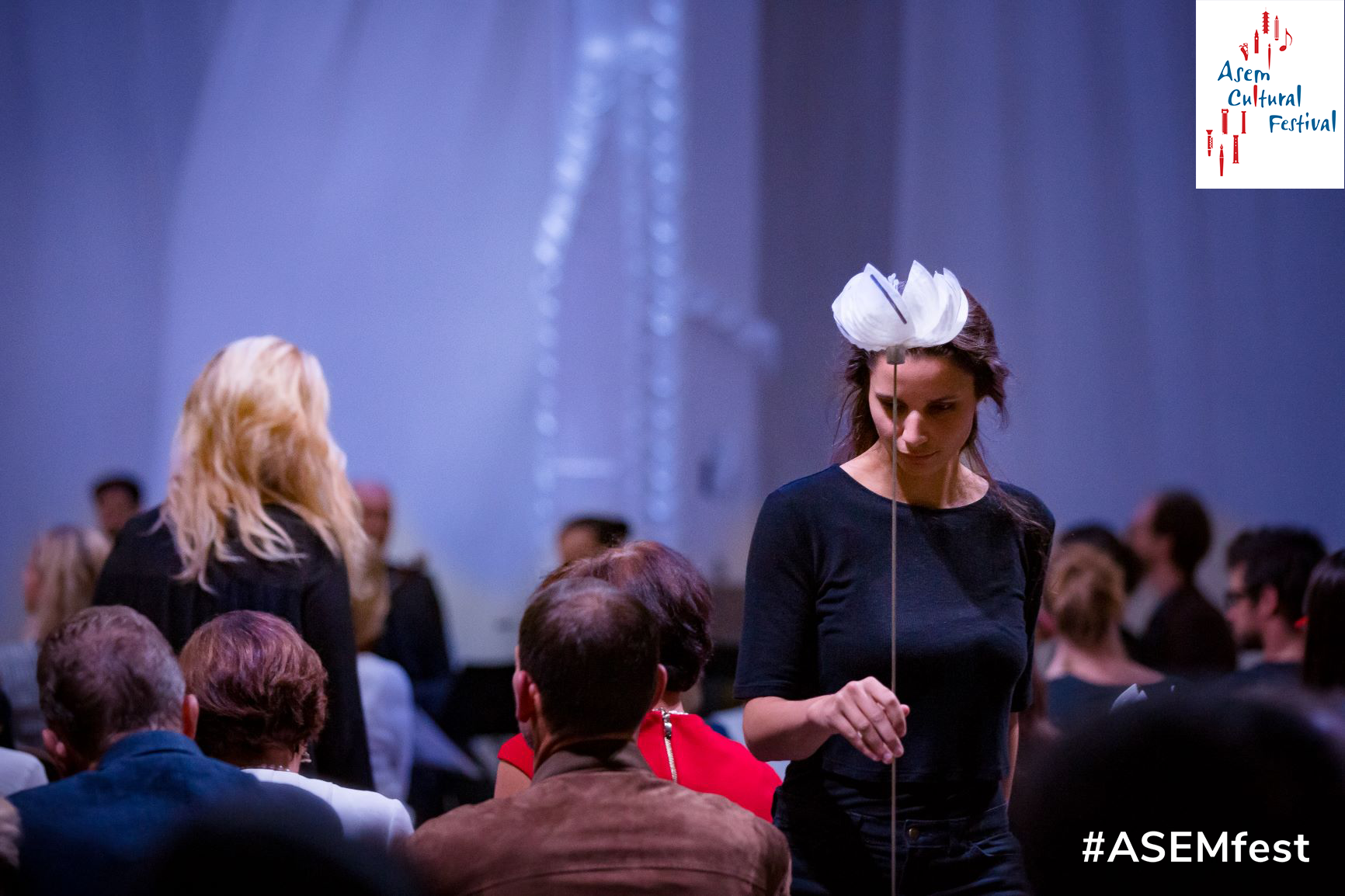
-----------------------------------------------
The ASEM Cultural Festival takes place on 18-30 October 2018 at the Centre for Fine Arts-Brussels (BOZAR) in Brussels, Belgium alongside the 12th ASEM Summit (ASEM12) (18-19 October 2018, Brussels), which brings together Heads of State and Government from the 53 partners of the Asia-Europe Meeting (ASEM) for dialogue on “Europe and Asia: Global Partners for Global Challenges”
The ASEM Cultural Festival is a celebration of dance, digital art, film, music, theatre and visual arts from Asia and Europe and features among others Ariunbaatar Ganbaatar (Mongolia), Bi Gan (China), Honore d’O (Belgium), Pichet Klunchun (Thailand), Wang Shu (China), and Svetlana Berezhnaya (Russia).
ASEM Cultural Festival Programme: https://bit.ly/asemfest
The festival is organised – as an official side event ASEM12 – by Centre for Fine Arts-Brussels (BOZAR) with the support of the Asia-Europe Foundation (ASEF) and the European Union, the host of the ASEM12 Summit.
www.ASEF.org
Similar content
11 Oct 2018
29 Oct 2018
from - to
18 Oct 2018 - 30 Oct 2018
02 Nov 2018
By culture360
19 Oct 2018
from - to
18 Oct 2018 - 18 Oct 2018


